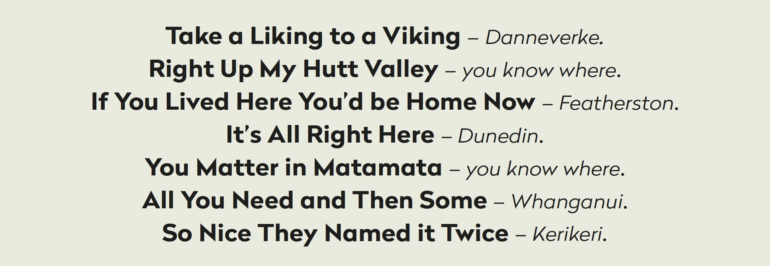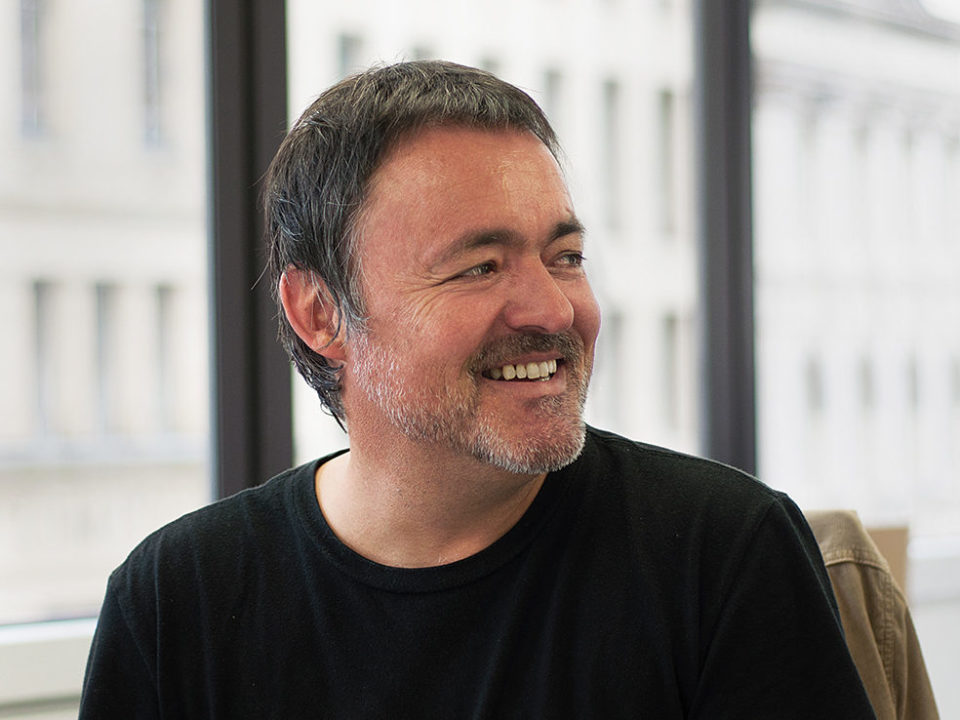Nick Sampson, strategy director with Principals Brand Agency has led place branding and story projects for Taranaki, Waikato, Bay of Plenty, Southland and the Hauraki Gulf Marine Park. He reviews the difference between a cute slogan and professional place branding.

These are not place brands. They are corny, bad-dad-humour slogans. They have all been used in real life(1) and one is still live.
Sure, a good slogan can be part of a brand’s toolkit. But, in the sector I work in, brand equals what people think of you. Not a gimmicky tagline some advertising guy dreams up. Or that the mayor writes on a beer coaster after a night out.
Real brands have a number of components that work together to build a profile and promote the perception you want. Logos, imagery, stories, tactical messaging, and yes, usually a slogan. These assets are applied to websites, social media and other communication channels. In content, ads, videos, signage, event promotions, media placements and other formats.
Everyone thinks their place is unique
To be effective your brand needs to be built on a clear definition of what makes your place unique – developed with an ‘objective’ understanding of your (cynical) target audiences.
Defining this can be harder than it sounds. People always tell me how unique and special ‘their’ place is. The hard bit comes when I ask why? There are lots of mountains, rivers, lakes, rolling green fields, gardens, museums, walkways, art galleries and festivals in this country. Likewise, I wish I had a dollar for every time I’ve heard “because we’re the friendliest people”.
Consult with your community
Uncovering what you can build an authentically differentiated place brand on requires consultation with all the local community, businesses and other stakeholders. Interrogating why this is ‘really’ a good place to live, work and learn. Why people should ‘actually’ consider visiting or moving here.
With the right process and well-facilitated consultation, your unique story can be articulated. The cringe factor can be avoided. Cynics can be won over, and community buy-in achieved.
It isn’t rocket science
The outcomes can then be used to underpin a proper multi-faceted brand. The process simply takes a bit of facilitation and place brand/story expertise, support from local council(s), a strong project owner, usually the local destination/economic growth entity, and a sensible budget.
Good place branding drives visitor attraction, immigration and economic growth. It also helps focus local pride and sense of identity.
You won’t achieve that with a silly slogan someone’s dad made up over his fourth pinot.
Footnote: (1) Nick has seen some of these slogans in the wild. Others are readily found online i.e. in a list posted by More FM in 2018. So, they must be true!


